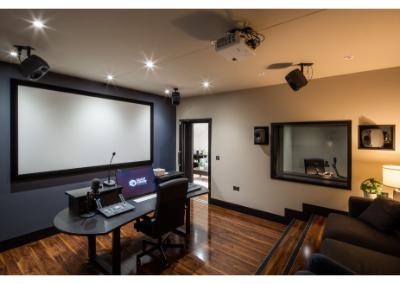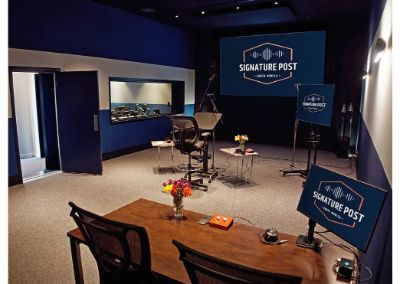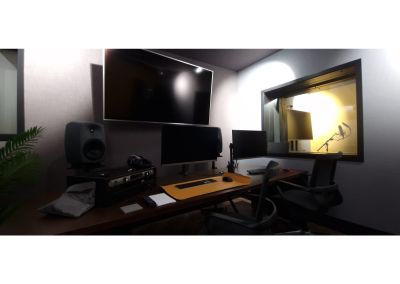Sustainability and Smart Studio Design
Green recording studio builds are something that as a recording studio builder, we should be thinking hard about. Whilst Smart Studio’s original mission was to increase the efficiency, speed and quality at which studios could be built, we have discovered a few advantages with regards to modular design/build and sustainability. With all sorts of grim projections for the future of our planet, t we need to do whatever we can. This article discusses the advantages of a design/build process to making more sustainable models of studio building, whilst also discussing some of the pitfalls and areas for improvement.
Recycling
When considering a green recording studio build, recycling is one of the first considerations. Because all the Smart Studio modules and components are built in a factory setting, recycling efforts are centralized. At Smart Studio, we take all the saw dust from our woodworking machines and turn it into woodchip pellets. This turns what would go into a land fill, into a source of energy. Because our modules use standard building sizes, there are less off-cuts and wastage is kept to a minimum. On-site, recycling efforts can be muddied, with the location determining the efficiency at which it can be completed. Off-site manufacture of the studio components is certainly advantageous as far as this is concerned.

Concept of design for disassembly:
While we featured this aspect of our Studio design/build in our dilapidation article, it is worth mentioning from an environmental perspective. When a studio’s premises must be vacated for whatever reason, acoustic architecture inherent to recording studios is often lost. A design/build technique makes it a cleaner process to remove and save recording studio components. The fact that a recording studio, facility or structure is assembled from prefabricated sub-assemblies facilitates disassembly. We estimate that up to 70% of the materials in a Smart Studio can be disassembled and moved to another site. The environmental implication is clear: reuse it or throw it in a landfill.

On site waste and disruption:
All the sawing and cutting is done off-site, with the dust recycled. This keeps the skip empty and means less harmful dust in the air during the build. Precise factory builds and standardized processes lead to increased quality control and therefore less waste. In the case of Smart Studio, we know what is going to work before we go to site.Another issue affecting more traditional builds is packaging on delivery, on relatively small lots of material. Bulk purchasing of materials off-site means much less package waste. The factory also offers a reliable way of recycling this packaging.
Centralizing energy use:
Centralizing construction efforts at the factory allows centralizing most of the energy use to one location. This means that green means of energy production can be researched and sourced for the factory. Because only 40% of electricity in Ireland is produced renewably, there is a decision to make as regards supplier. At Smart Studio, we went with one of four providers who have 100% renewable generated energy. All the energy spent making the recording studio modules is sourced renewably
Improving supply chain:
With a base of production that doesn’t change, time can be allotted to researching greener supply chains and find better alternatives to what is already is in use. As part of our commitment to a green recording studio build, we are always keeping an eye on more sustainable woods and insulation materials. For instance, we are currently testing the performance of recycled denim insulation made from old pairs of jeans to replace fiberglass-based insulations, something that was done in studio build in LA.
Possible environmental drawbacks:
Transportation costs are a potential drawback to a design/build system. There is more energy consumption in bringing all the materials from a centralized source than purchasing locally near the job site. We at Smart Studio are aware of this and are taking efforts to reduce our transport energy consumption. We recently acquired a Euro class 6 light truck, to lower emissions by as much as we could at this moment in time. We are also actively researching electric and hybrid solutions to our activity and expect to acquire such a vehicle in the next year or two. It has also been suggested that a “thoughtful plan on material sizing, packaging and delivering, prefabrication typically consumes less energy in transportation and onsite works.”

Conclusion:
Whilst everything is not perfect, we try to aspire to be the best we can be environmentally speaking. A design/build process offers inherent improvements to the idea of greener recording studio building. We are very conscious for the threat that climate change poses and are endeavoring all the time to improve our contribution. Have any suggestions? Drop us a line on twitter at @smartstudioinc or send us an email at info@smartstudioinc.com




